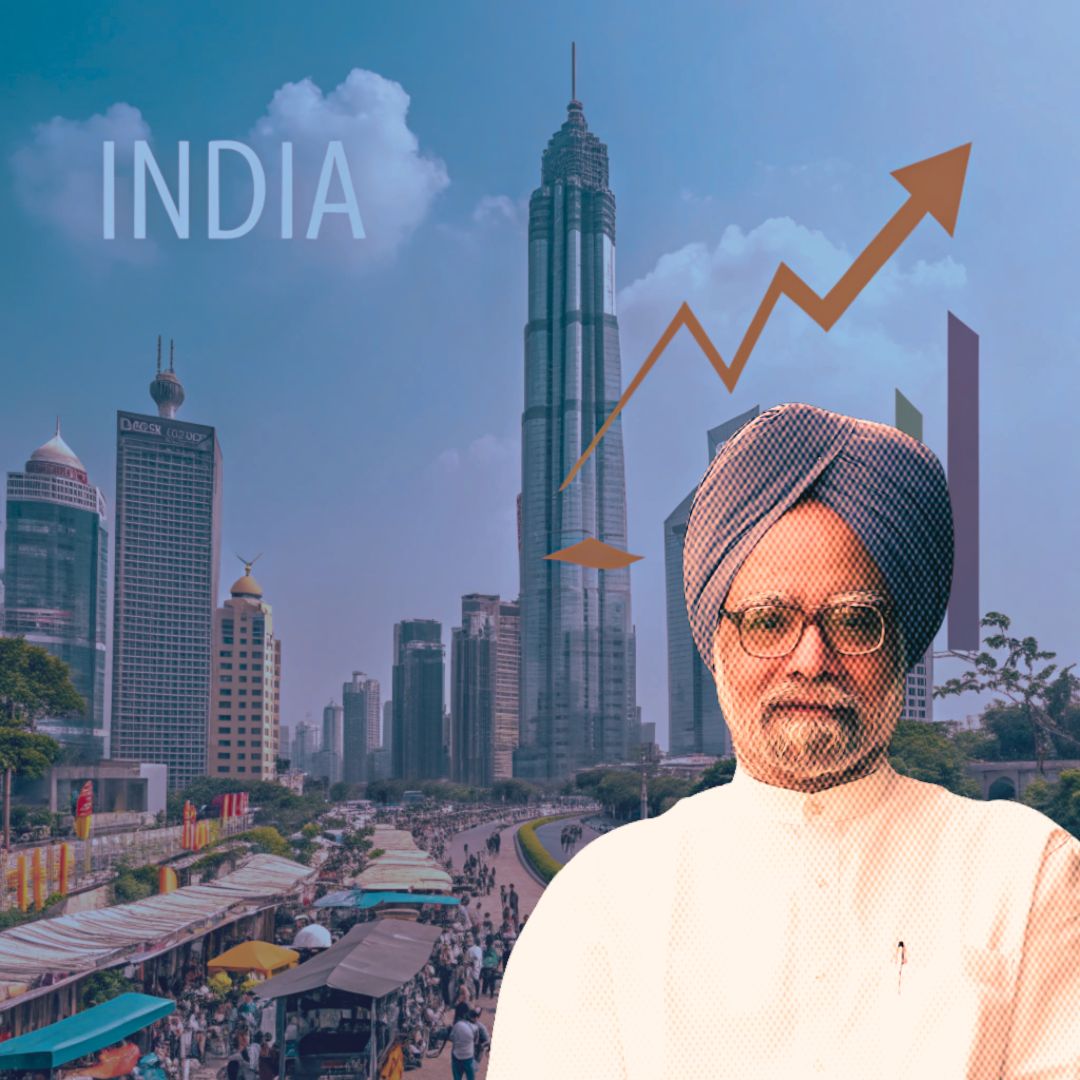Dr. Manmohan Singh, a name synonymous with India’s economic transformation, was not just a technocrat but an architect who paved the way for modern India’s liberalized economy. His contributions as Finance Minister in 1991 are nothing short of groundbreaking, pulling the nation out of its worst financial crisis and positioning it on a trajectory of high growth. Here’s a look at his monumental role in shaping India’s economic destiny.
1991: A Year That Divided Indian Economy Into ‘Before’ and ‘After’
The Indian economy of the early 1990s was at a breaking point. A balance of payments crisis loomed large, with the country having only 10–15 days’ worth of foreign reserves left. Inflation was soaring, fiscal deficits were unsustainable, and the specter of a sovereign default was real. In this critical juncture, Dr. Manmohan Singh, appointed Finance Minister under Prime Minister P.V. Narasimha Rao, introduced transformative reforms.
Breaking the Chains: The End of License Raj
The License Raj, a system that tightly controlled who could produce what and in what quantity, had stifled India’s economic potential. Under Dr. Singh’s leadership, these restrictions were dismantled, allowing businesses to operate more freely. This not only unleashed the entrepreneurial spirit of the nation but also fostered competition, enhancing productivity and efficiency across industries.
Opening Doors: Liberalization and Foreign Investment
Prior to 1991, India’s economy was largely protectionist, keeping foreign investments at bay. Dr. Singh’s policies welcomed foreign direct investment (FDI) and allowed foreign companies to establish subsidiaries in India. This inflow of capital rejuvenated the Indian economy, creating jobs and bolstering industries that were previously stagnant.
Addressing the Crisis: Bold Decisions That Changed India’s Future
Dr. Singh’s economic reforms were not without challenges. His measures included the devaluation of the Indian rupee to boost exports and pledging 47 tons of gold to secure loans from the International Monetary Fund (IMF). These bold actions stabilized the economy and restored international confidence in India.
A Visionary Budget: The Blueprint of Modern India
On July 24, 1991, Dr. Singh presented a budget that was more than just a financial statement—it was a manifesto for economic revolution. It emphasized structural reforms, reduced import tariffs, and allowed free-market principles to take root. Quoting Victor Hugo, he declared, “No power on earth can stop an idea whose time has come,” signaling India’s arrival as a global economic force.
Impact of Reforms: A Liberalized, Competitive India
- Domestic Market Efficiency: The dismantling of monopolistic controls led to enhanced productivity and efficiency within domestic industries.
- Global Competitiveness: With the entry of foreign brands, Indian companies were compelled to innovate and compete, benefiting consumers with better products and services.
- Strengthened Capital Markets: Reforms bolstered India’s capital markets, paving the way for a vibrant IPO culture and robust economic growth.
The Legacy of Dr. Manmohan Singh
Dr. Singh’s contributions extended far beyond 1991. He laid the foundation for an India that could integrate with the global economy, weather financial storms, and emerge as an economic powerhouse. His visionary leadership ensured that India transitioned from an inward-looking economy to one that was globally competitive and resilient.
Imagine India Without Dr. Singh
Without Dr. Singh’s reforms, the India of 2024 would have been vastly different—perhaps still grappling with inefficiencies, economic stagnation, and limited global influence. His policies were not just timely interventions; they were the seeds of a transformed India that thrives today.
Dr. Manmohan Singh’s era may have ended, but his vision lives on in every stride India takes towards progress. For today’s generation, understanding his contributions is not just a lesson in history but a testament to the power of courage, vision, and leadership in shaping a nation’s destiny.
The Logical Indian’s Perspective
Dr. Manmohan Singh’s economic reforms highlight the role of visionary leadership and collaboration in addressing crises. His legacy shows that progress is made through dialogue, empathy, and decisive action. As we reflect on his contributions, we can find inspiration to work toward a more inclusive, harmonious, and equitable society. What lessons do you think modern leaders can learn from Dr. Singh’s policies? Share your thoughts and join the conversation!












